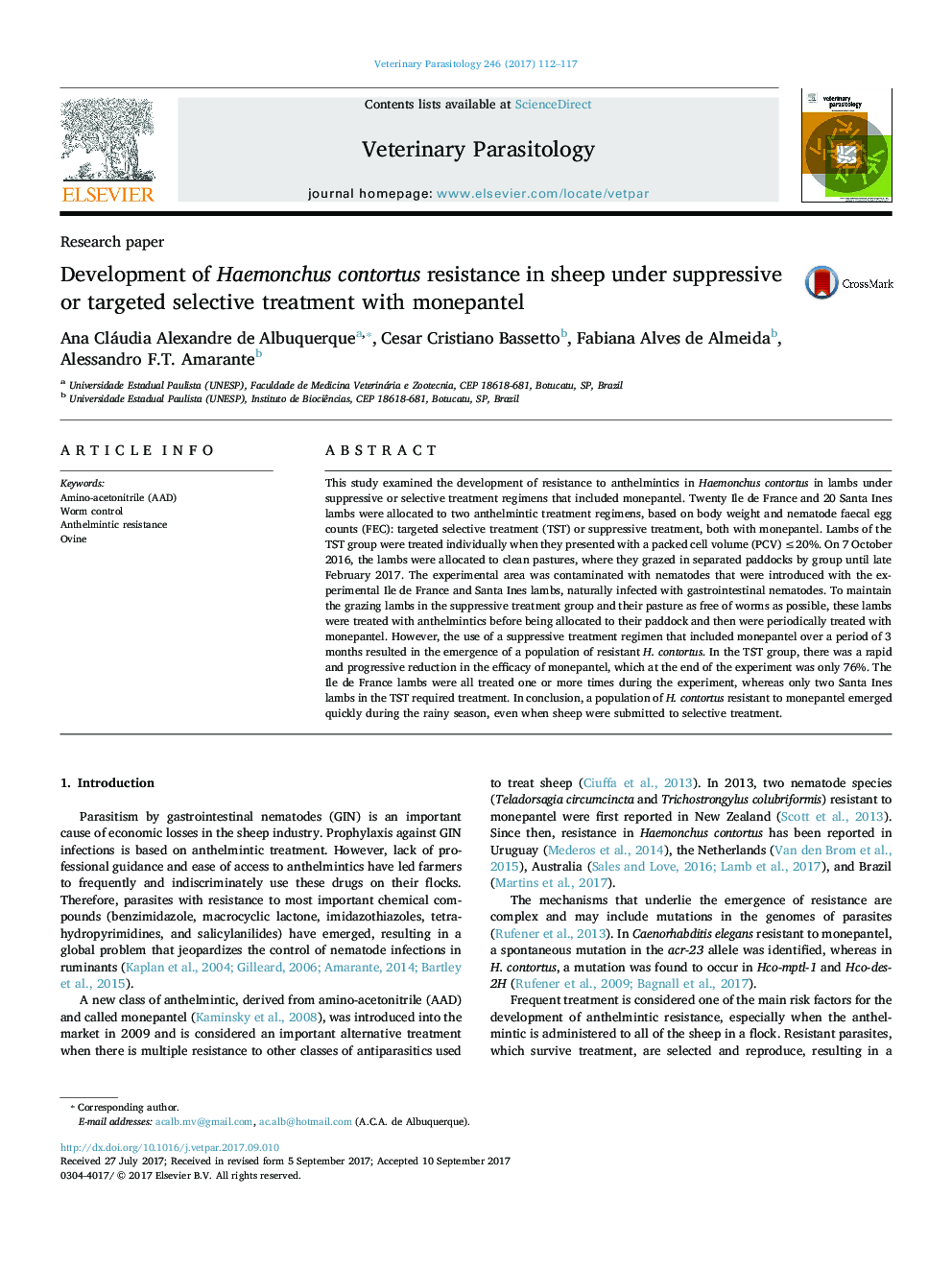| Article ID | Journal | Published Year | Pages | File Type |
|---|---|---|---|---|
| 5545640 | Veterinary Parasitology | 2017 | 6 Pages |
Abstract
This study examined the development of resistance to anthelmintics in Haemonchus contortus in lambs under suppressive or selective treatment regimens that included monepantel. Twenty Ile de France and 20 Santa Ines lambs were allocated to two anthelmintic treatment regimens, based on body weight and nematode faecal egg counts (FEC): targeted selective treatment (TST) or suppressive treatment, both with monepantel. Lambs of the TST group were treated individually when they presented with a packed cell volume (PCV) â¤20%. On 7 October 2016, the lambs were allocated to clean pastures, where they grazed in separated paddocks by group until late February 2017. The experimental area was contaminated with nematodes that were introduced with the experimental Ile de France and Santa Ines lambs, naturally infected with gastrointestinal nematodes. To maintain the grazing lambs in the suppressive treatment group and their pasture as free of worms as possible, these lambs were treated with anthelmintics before being allocated to their paddock and then were periodically treated with monepantel. However, the use of a suppressive treatment regimen that included monepantel over a period of 3 months resulted in the emergence of a population of resistant H. contortus. In the TST group, there was a rapid and progressive reduction in the efficacy of monepantel, which at the end of the experiment was only 76%. The Ile de France lambs were all treated one or more times during the experiment, whereas only two Santa Ines lambs in the TST required treatment. In conclusion, a population of H. contortus resistant to monepantel emerged quickly during the rainy season, even when sheep were submitted to selective treatment.
Related Topics
Life Sciences
Agricultural and Biological Sciences
Animal Science and Zoology
Authors
Ana Cláudia Alexandre de Albuquerque, Cesar Cristiano Bassetto, Fabiana Alves de Almeida, Alessandro F.T. Amarante,
